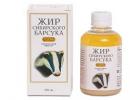Longan fruit are useful. Longan what kind of fruit, benefits, composition and calorie content
Longan (Lam Yai) is the fruit of an evergreen longan tree common in China, Taiwan, Vietnam and Indonesia.
The skin of the longan is thin and dense, but in fact it is very easy to peel off. The color of the longan varies from brown to yellowish red, the flesh of the fruit is translucent, white or pinkish. The juicy flesh of the longan has a sweet, juicy, very aromatic taste, with a distinct musk flavor. Longan tastes like lychee and in general, these two fruits are very similar. Like the Chinese lychee, the longan fruit contains a hard, dark red or black seed. Longan grows in clusters on evergreen trees, which can reach a height of ten to twenty meters.
Harvest season: June-August. Longan grows mainly in the northern regions of Thailand, in the town of Chiang Mai and Lamphun.
The longan is native to either the west of Burma or the area of origin of the litchi in China. It is in these regions that they are grown on a large scale. Longan has another name - "longyan" - which in Chinese means "dragon's eye". It is believed that longan was originally grown in southern India and on the island of Sri Lanka.
Longan is sold like grapes, in bunches. The skin of a ripe fruit must be dense, cracks in the skin are unacceptable. More ripe is not the longan that has just been plucked from the tree, but the one that has already lain a little on the counter of stores. Try longan before buying, as the fruits are sweeter or more sour.
Longan can be stored for two to three days at room temperature or five to seven days in the refrigerator.
Useful properties of longan (lam yaya)
Longan contains a variety of vitamins and minerals, including iron, magnesium, phosphorus, and potassium, as well as a large number of vitamins and. Recent studies on euphoria have shown that the fruit also contains phenols such as gallic acid, ellagic and corylagic acids, indicating that the fruit may have antioxidant properties, reduce the negative effects of chemotherapy drugs and protect the liver.
Longan contains riboflavin and is natural source polysaccharides, supporting health at the cellular level.
A review article about the exotic longan fruit: where and how it grows, how it looks and how it is eaten, taste, usefulness and harm, chemical composition and calorie content.
The content of the article:
Longan is the fruit of a tropical evergreen tree up to 12 m in height. The botanical name is Dimocarpus longan, a class of dicots, angiosperms. And the household common "dragon's eye" plant received in its homeland in China (from "yang moons"), because of the amazing similarity of the longan fruit and the big eye. Now trees grow in Vietnam, Taiwan (locally called Lamyai), Indonesia, India, Laos, Cuba, etc. warm countries. Another version of the origin of the plant is the province of Vietnam of the same name.
On one of the fruit-bearing branches of a tall tree with a dense and spreading crown, it ripens in many small "nuts" from 1.3 cm to 2.5 cm in diameter. The fruits ripen from June to August and harvest 200 kg each. The peel of the longan fruit is light brown, thin, brittle, sometimes a reddish tint is seen, it is not edible. But it is easy to clean, and a delicate mucous transparent and sweet pulp appears, inside of which a large, dark, shiny, hard, rounded seed "sits". Indeed, it is very similar to the open eye of a dragon.
How do you eat longan?

The fruit is sold in bunches, like grapes. Each "nut" is not very juicy, but it has a specific taste with a hint of musk. The aroma, although pronounced, is also peculiar. Slightly stale fruits have a more pleasant taste, but keep in mind that longan quickly deteriorates (5–6 days in the refrigerator). For transportation, they are harvested while still green.
Longan is eaten fresh. Like any fruit, it is used to complement ice cream and desserts, served with spicy and hot dishes. Drinks from it perfectly quench thirst, improve appetite and refresh. For example, in Thailand they eat sweet longan soup, prepare snacks and desserts, dry them, and preserve them with syrup. IN canned this exotic fruit also comes to store shelves from Shanghai, Taiwan, Hong Kong. Lovers of sweet spirits can treat themselves to dragon's eye liqueurs.
The chemical composition and calorie content of longan

The fresh fruit (in the pericarp shell) contains many biologically active compounds: flavonoids, polysaccharides and phenolic acids. In addition to organic acids, micro and macro elements, vitamins, fiber.
So, 100 g of fresh longan contains:
- Fat - 0.10 g
- Carbs - 15.13g
- Proteins - 1.30 g
- Fiber, dietary fiber - 1.12 g
- Water - 82.8 g
- 4.9 g - proteins
- 0.4 g - fat
- 74 g - carbohydrates
- B1 thiamine - 0.039 mg
- B2 riboflavin - 0.13 mg
- B3 niacin - 0.303 mg
- C - 84.08 mg
- Potassium - 266.2 mg
- Phosphorus - 21.4 mg
- Magnesium - 10.2 mg
- Copper - 0.17 mg
- Calcium - 0.99 mg
- Iron - 0.125 mg
- Manganese - 0.05 mg
- Zinc - 0.049 mg
Useful properties of longan

If we talk about the benefits of longan, then we can safely consider the whole tree as a whole. For example, the leaves of this plant have antioxidant properties. Flower extract suppresses inflammatory and oxidative processes, reduces arterial pressure and improves coronary blood flow. Such a large amount of polyphenolic compounds, as in the extract of seeds and flowers of longan, can be used to prevent diabetes and oncological processes in the body and to treat neoplasms.
Separately taken longan seed extract, consisting of ellagic, gallic and carylagic acids, slows down cell aging.
The pulp of this fruit tropical plant(both fresh and dried) in oriental medicine is used for the prevention and treatment of inflammation, stomach diseases, as an antihelminthic and lowers high body temperature. The riboflavin contained in longan improves immunity, tones. In general, it eliminates fatigue, supports vision, normalizes sleep, soothes, relieves dizziness, and improves concentration. In the traditional Chinese medicine longan fruits and a decoction of them are "prescribed" for impaired metabolism and as a sedative, hypnotic. Powder from the seed of the "dragon's eye" contains tannins, fats and saponin, so they can stop bleeding, cure eczema, hernia, dropsy, enlarged lymph nodes in the armpits and neck, dropsy.
Contraindications to the use of longan

Nothing can be said about the dangers to health - the fruit does not contain toxic substances. But some may have individual intolerance to the product, only this exotic fruit may be contraindicated for them.
Synonym: lamyaj, longyan, dragon's eye, soap tree, lamyaj, euphoria longan.
Longan is a very beautiful evergreen sprawling tree with oblong leaves that look like leaves. walnut. The fruits of this exotic plant appear on the branches in clusters and are pale yellow, sometimes brownish or reddish in color. In China, these fruits are called "dragon eyes" (longyan) because of the white translucent pulp. Longan is grown for its edible fruits and is used with pleasure in cooking.
Ask the experts
In medicine
Longan is not included in the State Pharmacopoeia and is not used in the official medicine of Russia, however, it is very popular in the places of its growth and cultivation as a dietary and high-vitamin food product. Traditional healers of the countries of East and Southeast Asia use fresh and dried fruits and seeds of longan as an anthelmintic, anti-inflammatory, sedative, as well as for diseases of the organs. of cardio-vascular system, obesity and beriberi.
Contraindications and side effects
When eating these tropical fruits, allergic reactions or indigestion may occur. Pregnant and lactating women, as well as children and people with individual intolerance, use the fruits of longan with great care.
The stone in the longan fruit is poisonous!
In cooking
Longan tastes vaguely reminiscent of grapes and is mainly eaten in fresh. It is added to salads, drinks and confectionery. In Thailand and China, from fruit pulp mixed with rice and coconut milk make an unusual dessert. The fruits are used to make thirst-quenching drinks, soups, sauces and toppings. In Vietnamese and Taiwanese cuisine, longan is turned into a candied fruit that looks like a raisin. During this processing, all beneficial features fruits are preserved. Europeans "dragon's eye" is better known as an exotic addition to liqueurs, cocktails, fruit salads and ice cream.
Classification
Longan (lat. Dimocarpus longan) is a perennial plant of the genus Longan, of the Sapindaceae family (lat. Sapindaceae). In the genus Longan (lat. Longan) there are about 50 species.
Botanical description
Longan is an evergreen upright tree that grows up to 12 meters in height. The trunk of the tree is covered with rough bark, the crown consists of long, densely growing branches. The width of the crown reaches 14 meters. The leaves of the plant are paired, have an oblong, elliptical shape. Their length is 10-20 centimeters, width is 3.5-5 cm. They are leathery and wavy, greenish-gray below and bright green above.
Spherical longan fruits grow in clusters. Covered with a thin but rough crust, they grow up to 2.5 cm in diameter. The translucent pulp of the fruit has White color and soft, mucilaginous texture. Inside each fruit is a rounded, black with a white spot at the base, shiny seed.
Spreading
According to one version, the island of Sri Lanka and South India are considered the birthplace of the longan. However, this tree does not really like a hot climate, so there is another version, the true homeland of a subtropical plant is China with the coolest climate. Now longan is cultivated in Vietnam, Burma, Indonesia, Taiwan, Australia, Thailand and the USA. In China, the cultivation of longan is extremely high level. Therefore, the fruits grown here are distinguished by their excellent quality. fruits in large quantities exported to the countries of eastern and southern parts of Asia, to Europe and the USA.
Procurement of raw materials
Harvesting takes place in summer (June-August). As a rule, longan is eaten fresh. When choosing a fruit, you need to pay attention to the skin, it must be whole, without damage and cracks. Unfortunately, fruits are plucked from the tree while still green, and the ripeness of the fruit can only be determined after removing the peel (some varieties have a greenish crust), unripe "dragon eyes" will taste sour. If you let the fruits lie down for a short time, they will reach the desired condition. Longan is stored for a short time, at room temperature for 2-3 days, in the refrigerator for 6-8 days. For export, longan is sent in dried or canned form, fresh is sent less often.
Chemical composition
The flowers of the plant contain in their composition the tannin tannin and the flavonoid proanthocyanidin, which has an antioxidant property. The pulp contains vitamins thiamine - B 1, riboflavin - B 2, niacin - B 3 or PP, vitamin C, potassium (266 mg), calcium (1 mg), magnesium (10 mg), phosphorus (21 mg), as well as trace elements iron (0.13 mg), manganese (52 µg), copper (169 µg), zinc (50 µg), polysaccharides LP1, LP2, LP3 containing nitrogen. The composition of the seeds of the plant includes gallic, carylagic, hebulic, chlorogenic, ferulic, p-coumaric, synapic, gentisic and ellagic acids. In plant oil, palmitic and oleic acids make up 35 and 28%.
Pharmacological properties
First of all, longan is valuable food product. Its fruits are rich in vitamins and amino acids, have a low calorie content and can be included in the diet.
Despite the fact that longan is not used in official medicine, due to the substances included in its chemical composition, it has some medicinal properties, for example, astringent and antibacterial, due to the high content of tannins. The content of vitamin C in the pulp of the fruits of the plant allows them to be used for colds and avitaminosis.
Application in traditional medicine
Longan is a plant widely used in traditional medicine China, Vietnam, Taiwan, Thailand and other places of its growth and cultivation. For example, dried seed powder is used by Asian healers to improve blood circulation and reduce sweating, and a decoction of the pulp or dried longan fruit is used as a remedy for abdominal pain and to improve digestion. In Vietnamese folk medicine, crushed longan seeds are applied to snake or insect bites.
It is known that eating fruits (pulp, in particular) during intestinal infections helps to cure them. Healers of East and Southeast Asia recommend eating fresh longan fruits as a prophylactic against worms, as well as a vitaminizing agent after a long illness or a strict diet.
It is believed that fresh longan fruits have aphrodisiac properties, and longan honey is effective for colds and even skin infections(outside). There is an opinion that longan favorably affects nervous system a person, regular consumption of its fruits helps to improve sleep, relieve anxiety and tension.
Historical reference
Despite the fact that China is considered the birthplace of longan, it is a fairly common fruit in Thailand. Initially, the Thai king Rama V was presented with 4 seedlings of this plant, two of which were planted in Bangkok, and two more in Chiang Mai. Over time, the area of its cultivation has increased significantly, and today it can be found in every corner of the country, which makes it possible to collect longan fruits throughout the year.
In Chinese folklore, there is a legend about Longan, a noble young man who saved the inhabitants of a village from a cruel dragon. On the edge of the abyss, Longan gouged out the dragon's eyes and threw him at the cost of his life. And in the place where the young man was buried, after some time a wonderful tree grew. Delicious and incredibly useful fruits grew on it. They called the tree - longan.
Literature
1. Pugacheva E.V., Serebryakov S.O. Tropical Fruits, Eyewitness Series, ed. 2016
Not everyone knows such as longan. It grows mainly in China, but can be found in Indonesia, Taiwan, Vietnam. In this article, we will take a closer look at what longan is and how it is eaten.
Longan: what is this fruit
Longan is an exotic fruit (another name is "dragon's eye"). It grows on tall trees. The fruits are collected in clusters, like grapes. The diameter of one "" longan is about 2 cm.
 "Dragon's eye" is covered with a dense light brown peel, which is easy to peel with pressure with two fingers. Inside is a transparent pulp. Her taste is sweet and specific, with a hint of musk. Before eating longan, you need to remove the bone, as it is very hard and unsuitable for consumption.
"Dragon's eye" is covered with a dense light brown peel, which is easy to peel with pressure with two fingers. Inside is a transparent pulp. Her taste is sweet and specific, with a hint of musk. Before eating longan, you need to remove the bone, as it is very hard and unsuitable for consumption.
Fruit ripens from June to August, one tree can bear about 200 kg of fruit.
Important!To transport the fruit, it is necessary to harvest it while still unripe, because the longan quickly deteriorates.
Calorie content and chemical composition of "dragon's eye"
Longan has a low calorie content: 100 g contains approximately 60 kcal.
In its chemical composition 100 g of longan have:
- water -82.8 g;
- fat -0.1 g;
- carbohydrates -15.1 g;
- proteins -1.3 g;
- fiber -1.1 g.

Also fruit contains:
- potassium -266 mg;
- magnesium -10 mg;
- calcium -1 mg;
- phosphorus -21 mg;
- manganese -0.05 mg;
- copper -0.2 mg;
- iron -0.13 mg;
- zinc -0.05 mg.
- C -84 mg;
- B2 riboflavin -0.1 mg;
- B1 thiamine -0.04 mg;
- B3 niacin -0.3 mg.
What is useful longan
The exotic longan fruit not only tastes good, but can also provide benefits. human body. The pulp of the fruit is used in oriental medicine to treat inflammation, stomach disorders, or as an antipyretic.

In China, a decoction of the fruit is used for poor metabolism and as a sedative. Longan seed powder is used to stop bleeding, treat eczema, hernia, dropsy, enlarged lymph nodes.
Did you know?In Vietnam, longan seeds are used to treat snake bites by pressing them against the wound as an antidote.
How to choose and store longan
Sold "dragon's eye" in clusters, which are collected in a small whisk. When you lift the bundle, it should not crumble. To select a ripe and tasty fruit, you need to look at its peel. It should not have cracks or any damage.
You should not pay special attention to the color of the fruit, since it does not depend on maturity, but from variety. The most delicious fruit is the one that has lain for several days after it has been plucked.

But on appearance it is very difficult to define it. So the best option choosing a ripe fruit - taste it. If the pulp is slightly sour, then the fruit is unripe. In this case, it must be placed in warm place and wait for full maturity.
Now let's talk about how to store longan. At room temperature, the fruit is stored for about three days. If you are going to store it longer, then it is better to use a refrigerator for this. There longan will be able to withstand 5-7 days, because it tolerates very well low temperature. Due to its dense peel, the fruit will be able to retain its shape.
How to eat longan fruit
Longan fruits are mostly consumed fresh. They are also used to prepare fruit salads, desserts or used as decoration for cakes. In Thailand, sweet soups, snacks, and seafood sauces are prepared from fruits. In addition, it is dried and canned. Even from the "eye of the dragon" make refreshing drinks that help quench thirst and improve appetite.
Asian "grape" - longan fruit
Two countries can claim to be the birthplace of this fruit: wild specimens were first discovered in the mountains separating China and Myanmar.
The representatives of the Han Dynasty, who ruled the Celestial Empire two centuries before our era, dreamed of cultivating Longan. However, in the northwestern capital province, the trees did not take root. Longan fruit is picky, he liked the mild climate of the south of the country. It is grown here today.
In Thailand godfather The plants became King Chulalongkorn himself. He was presented with seedlings by one of his subjects, who returned from China. Four (according to another version, five) seedlings were planted in different parts kingdoms. Today, longan is endless plantations throughout the country.
The fruit is known by several names. The Chinese dubbed it the "dragon's eye" (the cut fruit really resembles the eye of a mythical character), the Thais - "lam yai".
About how longans are useful, they know better than others in his homeland, in Asia. People come here for healing and fruit tasting from all over the world.
What does a longan look like?
Not without reason are considered "brothers" longan and lychee. The fruits are similar in structure: the peel covers a translucent, delicate pulp, inside which a large bone is hidden.
There are also differences:
| Characteristic | Longan | Lychee |
|---|---|---|
| skin, texture | rough, without tubercles | tuberous-spined |
| Peel, color | from beige-buff to orange | bright red |
| Peel, coloring character | brownish spotting | uniform |
| Bone | rounded | elongated |
Longan looks like a nut, lychee looks like a raspberry.
A bunch of longan is similar to a grape.
How longan grows
Botany considers longan to be a plant of the Sapindaceae family. From the same "clan" - lychee, guarana, spanish.
Growing features
The flowers form inflorescences-panicles, becoming a cluster. The fruits grow on trees 10-12 meters high. Long branches form a crown of the same diameter. They look like vines.
So that the branches dotted with fruits do not break, they are supported from below with wooden structures. The tree produces up to two centners of fruits, but they are harvested only by hand.
Distribution area
In addition to the homeland, the tree has mastered other countries. It is cultivated throughout Southeast Asia: Vietnam, Cambodia, Laos, adjacent archipelagos (Malaya, Philippines, Indonesia). There are plantations in the USA, in Cuba.
The wild species is listed in the International Red Book as potentially endangered.
Longan season in Thailand
The country is the second in terms of production and export of fruit.
Plantations are laid throughout the territory. Climatic conditions in northern and southern parts different, so the harvest is removed all year round.
For tasting exotic fruit longan you can come to the country at any time. If you choose the right region and time of the trip, you will get fresh fruits almost for nothing.
In July-September, longan ripens in the south. Here at this time it is the cheapest. In other months - in the north.
Regardless of the season, the cost of the fruit is not prohibitive.
The chemical composition and calorie content of longan
Like any, more than 80% of the pulp of a longan is water. The rest is a set of minerals, vitamins, fiber. By the amount of vitamin C, it overtakes oranges.
calories
Fresh longan has a low calorie content - 60-65 units per 100 grams of pulp.
Dried fruit is four times as high in calories - 280-285 kcal per 100 g.
Compound
The pulp contains substances vital for the body, including those absent in the usual fruits:
- vitamins: group B (1, 2, 3, 6, 12), C;
- minerals: iron, copper, phosphorus, magnesium, manganese, potassium, calcium, zinc;
- fiber;
- biologically active components: flavonoids, polysaccharides, phenolic formations.
Longan contains a large amount of vitamin C, which covers the daily requirement of the body.
The nutritional value
100 grams of pulp include (g):
- proteins - 1.32-1.34;
- fats - 0.12-0.16;
- carbohydrates - 15.2-16.3.
A small amount of fat, a relatively high content of complex carbohydrates suppresses hunger, making the fruit a safe snack. Fiber improves digestion, cleanses the body of "garbage".
Useful properties of longan
Longan has beneficial properties in all parts of the plant. They are used for health, beauty, healing practices.
Health
The impact of the fruit is manifested in a wide range:
- vitamin C (which is rich in longan) fights against acute respiratory infections, influenza; strengthens the immune system, neutralizes beriberi, scurvy; helps the body absorb iron;
- protects the heart, preventing strokes, heart attacks;
- treats the gastrointestinal tract, kidneys, liver, and other internal organs;
- high iron content (15-20 times more than spinach or grapes) improves blood circulation; helps with anemia chronic fatigue, dizziness;
- promotes brain function, neutralizing senile dementia, Alzheimer's, Parkinson's and the like;
- effective as an antipyretic, anthelmintic;
- reduces the risk of developing certain types of cancer.
Longan slows down aging. All thanks to polyphenols, which help destroy free radicals and prevent cell destruction.
beauty
Antioxidants make beautiful and healthy skin: dryness, sagging are reduced, age spots are removed.
Exot is popular as an aphrodisiac.
Regular consumption of fruit supports health oral cavity, teeth.
For treatment, it is better to take dried or dried fruits.
Sweet fruit - effective remedy"from nerves", aging a person, killing beauty. If you overcome insomnia, anxiety, depression, a handful of berries will solve problems.
traditional medicine
In Chinese medicine, in other Asian aesculapius, all inedible parts of the plant are considered medicinal.
The peel and leaves are saturated with biologically active substances:
- Of these (sometimes with other ingredients), decoctions are prepared for the treatment of cardiovascular diseases, diabetes, and allergies.
- Doctors say that even oncology is receding.
- They contain quartzetin - a three-in-one component: an antioxidant, a bactericide, an antiviral agent.
Seeds rich in saponin, tannins, are used as a medicine and hygiene product:
- a bone is applied to the bite site to draw snake venom out of the body;
- crushed are effective as an anthelmintic or to reduce sweating;
- saponin is used as an additive in hair care products.
Decoctions and teas are prepared from leaves and flowers. Chinese doctors prescribe them for abnormalities in the digestive tract.
What does it taste like and how to eat it
Outwardly, the fruit resembles large grapes: the same berries, collected in clusters. But taste qualities differ noticeably.
fruit flavor
Determining what longan looks like is difficult. It is not comparable with other tropical exotics, especially the usual fruits. The fruit is sweet to sugary, with a musky aftertaste. But not cloying. Someone hears a grape aroma with a hint of melon of the Amal variety.
Most agree that it is almost lychee, but without sourness.
How to choose a ripe longan

When choosing a fruit, evaluate the following parameters:
- Skin. It must be solid, even, “wrinkles”, cracks, damage. At the same time, it is rough, dry, and cracks when pressed.
- Taste. Ripened fruits are sweet, with a rich aroma.
- Density. Ripe fruit remains firm. Too soft is overripe.
If you come across sour specimens, you should not be upset. After lying warm for several days, they will become sweet.
It is better to buy a whole bunch of berries, with twigs. So they are most often offered in Asian markets. Like grapes, without stalks they spoil almost immediately.
How to clean and eat longan
The fruit is only edible pulp. Despite the seeming impregnability, it is not difficult to clean the longan:
- the berry is torn off from the stem;
- take with the thumb and forefinger, slightly squeeze;
- when the shell bursts, its halves are removed;
- you can cut the peel with a knife in place of the stalk and peel the berry like an egg.
The white-pinkish flesh is eaten whole, being careful not to swallow the bone, which is located inside.
The bone is dangerous to swallow, it is toxic.
It is believed that it is better to eat fresh fruit. It is added to desserts, smoothies, ice cream, salads, as a garnish ingredient for fish or meat.
In Southeast Asia, strong and non-alcoholic soft drinks are made from it.
Gourmets claim that the best exotic is dried or dried. Without water, the taste and aroma are enhanced.
How to store

From a trip to exotic countries fruits are brought home - for a gift or for themselves, in order to prolong the pleasure. Exot is considered delicate, but the problem of how to store longans is solvable. At room temperature, even ripe specimens are stored for three to four days. In the refrigerator - a week and a half.
The advantage of the fruit is the preservation of useful and taste parameters after freezing. It can be kept in the freezer for months. Least of all hassle with dried or dried fruits.
Longan harm
The fruit has few contraindications:
- It should not be eaten by allergy sufferers.
- A rather high percentage of carbohydrates limits its intake by diabetics.
- It is better not to give to babies under the age of three.
- Overeating causes diarrhea. For a person of average build, eight to ten fruits are enough at a time.
From longan, the benefits and harms can be due to the characteristics of the body. Individual intolerance is not excluded. Therefore, at the first consumption, they are limited to two or three fruits. If after a couple of hours the stomach is calm, nothing has appeared on the skin, you can eat as much as you want.
Conclusion
Visually, not too bright longan loses to “festive” rambutan or pineapple. But it is not inferior in taste and usefulness. Moreover, only he is able to help the European stomach adapt to Asian exoticism. The fruit is advised to eat to make it easier to digest local food.
It is believed that the best varieties are grown in Thailand and Vietnam, so it is advisable to go there for a tasting.
Unlike other exotics, it tolerates many hours of flight well. You just need to take slightly unripe bunches. The seller will help you choose, sometimes bunches are offered with a basket. Alternatively, put in a hard plastic container.







